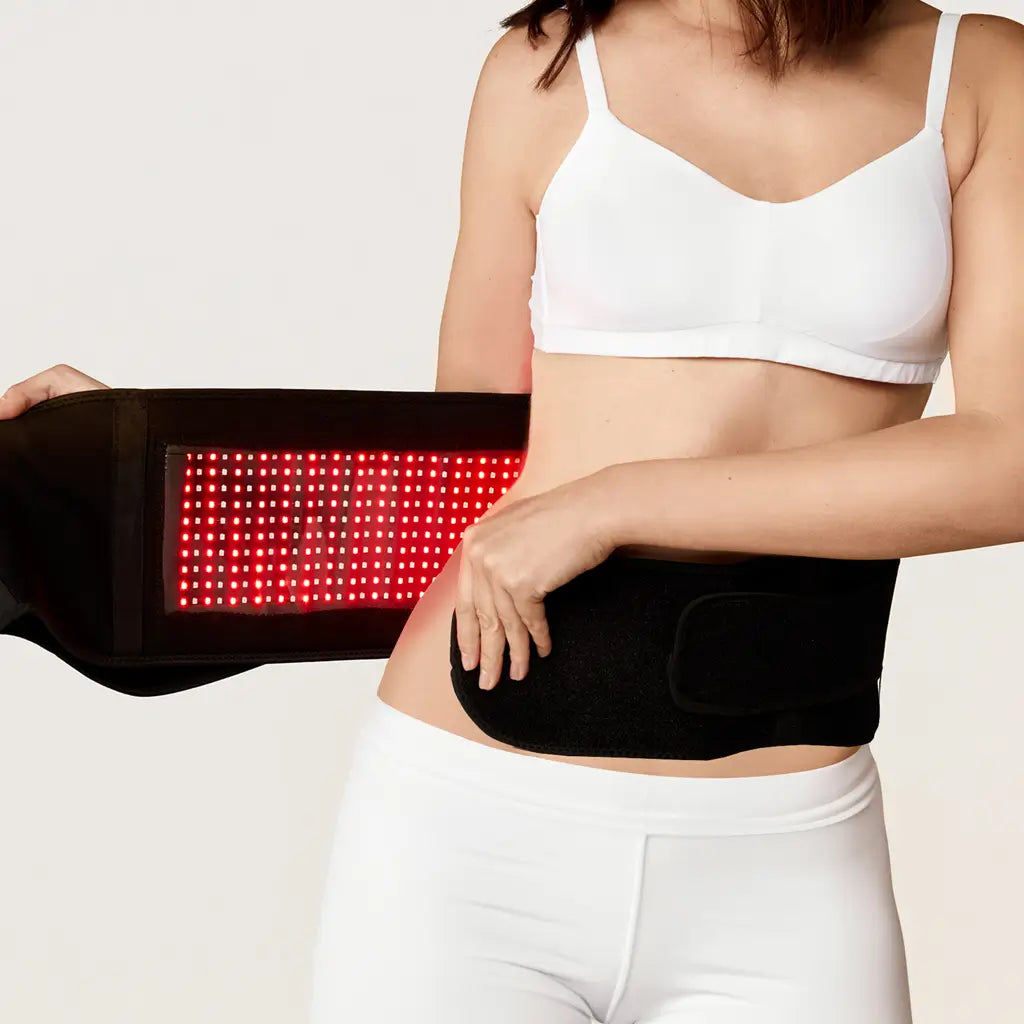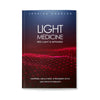
Fitness and sports are always evolving to employ the best tools in favor of the athlete’s interest. Red light therapy is a revolutionary way to use a particular spectrum of light. It was initially thought for acne, scars, and other skin conditions. But studies are finding every day more applications to this new technology, including muscle recovery and performance.
Did you know about this painless way to recover from strenuous exercise? Would you believe me if I say that red light therapy repairs muscle tissue? I’ve got some compelling evidence for you, and it all comes from scientific sources.
Red light therapy basics
Before turning our attention into muscles and performance, let’s take a short review. We know that light has a spectrum depending on the length of radio waves. Some of them are relatively short, others are very long, and the light we see is right in the middle. The wavelength of X-rays is shorter, and we can’t see these rays. The same happens with infrared light, which has a longer wavelength as compared to visible light.
The body reacts differently to each wavelength. For example, X-rays travel through the soft tissue of the body and only reflect bone tissue. That’s why it is used for medical imaging.
Infrared light also penetrates deeper tissues, and it stimulates blood flow while doing so. By doing so, it favors nutrition and metabolic processes in our cells. This can be useful to prompt faster tissue repair and improve recovery rates in different parts of the body. That’s where the muscle tissue and sports medicine come into play.
Why is red light therapy becoming a trend in fitness?
Red light therapy has been used successfully to stimulate recovery in the skin and other body parts. But the muscle is one of the tissues that undergo more trauma every day. Even when we’re not aware, there is muscle tissue breaking and tearing apart. New muscle fibers are created in a continuous cycle.
If you’re training regularly, the number of torn muscle fibers you need to recover every day can be overwhelming. This causes soreness and sometimes compromises your performance. Naturally, a technology that speeds up recovery can be tempting if you’re worried about your gameplay.
Besides increasing your blood flow, red light therapy also speeds up the production of antioxidants. Thus, your muscles are more protected against free radicals created during strenuous exercise. These antioxidants also contribute to building muscle by promoting protein production and preventing further damage.
Depending on how you use red light therapy, you can get different benefits:
- Using red light therapy before your workout: It protects your muscle fibers from free radicals and other muscle damage sources. It reduces the degree of inflammation and the strain in your body. Thus, you may experience a reduction in muscle soreness and recovery time.
- Using red light therapy after your workout: It accelerates your muscle tissue recovery after it has been damaged or torn. It contributes to muscle adaptations to exercise by promoting the synthesis of proteins. It also modulates inflammation that is usually triggered after your workouts.
Before turning our attention into muscles and performance, let’s take a short review. We know that light has a spectrum depending on the length of radio waves. Some of them are relatively short, others are very long, and the light we see is right in the middle. The wavelength of X-rays is shorter, and we can’t see these rays. The same happens with infrared light, which has a longer wavelength as compared to visible light.
The body reacts differently to each wavelength. For example, X-rays travel through the soft tissue of the body and only reflect bone tissue. That’s why it is used for medical imaging.
Infrared light also penetrates deeper tissues, and it stimulates blood flow while doing so. By doing so, it favors nutrition and metabolic processes in our cells. This can be useful to prompt faster tissue repair and improve recovery rates in different parts of the body. That’s where the muscle tissue and sports medicine come into play.
- Improves cell oxygenation and nutrition by increasing the blood flow (1)
- Contributes to the formation of ATP (energy) inside the cell (2)
- Improves the antioxidant profile and protects the muscle from free radicals (3)
- Protects the muscle against massive damage during strenuous exercise bouts (4)
- Repairs the muscle faster and promotes muscle adaptation (4, 5)
- Contributes to physical performance and reducing fatigue (5)
- Improves resistance to more extended strength training programs or short and intense bouts of exercise (6)
Thus, red light therapy is becoming a trend in sports, including group sports, resistance training, cardio, weight loss goals, and bodybuilding. Regardless of the type of exercise, there’s an application of red-light therapy out there waiting for you.
Modalities and available devices
Traditionally, you would need to go to a medical facility to use red light therapy. Now it is available for the general public with different types of LED light sources. What you need to know about these devices is that they can use red or infrared technology. Ideally, they should offer both because each one penetrates the skin to a different depth. You can use them safely as red light and infrared therapy are non-invasive with no side effects.
The type of device you want to use depends on the area you wish to treat, and your budget. Handheld devices are are affordable and easy to maneuver. However they are often low powered and treatment is either not effective or takes a long time to perform. Large hard-shell units are becoming popular and can be placed against the wall or over a door for full body rejuvenation, however these devices are cumbersome, expensive, and best for general wellness. The patented Nushape wraps put targeted light therapy treatment into a flexible, hands-off, portable body wrap - and at the fraction of the cost of hard shell options.
How to use
As noted above, you can use red-light therapy before or after training. If you’re looking for adaptations (an increase of muscle mass, for example), you would prefer to use it after working out. You can also use the technology before exercising if you’re about to engage in resistance exercise and before an important match.
It can also be useful if you have overuse injuries or acute sports lesions. It is applied in the trouble area and will also reduce the risk of ligament damage, strains, sprains, and contusions.
References:
- Ferraresi, C., Parizotto, N. A., Pires de Sousa, M. V., Kaippert, B., Huang, Y. Y., Koiso, T., ... & Hamblin, M. R. (2015). Light‐emitting diode therapy in exercise‐trained mice increases muscle performance, cytochrome c oxidase activity, ATP, and cell proliferation. Journal of biophotonics, 8(9), 740-754.
- Ferraresi, C., Kaippert, B., Avci, P., Huang, Y. Y., de Sousa, M. V., Bagnato, V. S., ... & Hamblin, M. R. (2015). Low‐level laser (light) therapy increases mitochondrial membrane potential and ATP synthesis in C2C12 myotubes with a peak response at 3–6 h. Photochemistry and photobiology, 91(2), 411-416.
- Houreld, N. N., Masha, R. T., & Abrahamse, H. (2012). Low‐intensity laser irradiation at 660 nm stimulates cytochrome c oxidase in stressed fibroblast cells. Lasers in surgery and medicine, 44(5), 429-434.
- Hamblin, M. R. (2017). Mechanisms and applications of the anti-inflammatory effects of photobiomodulation. AIMS biophysics, 4(3), 337.
- Ferraresi, C., Hamblin, M. R., & Parizotto, N. A. (2012). Low-level laser (light) therapy (LLLT) on muscle tissue: performance, fatigue and repair benefited by the power of light: Low-Level-Laser (Licht)-Therapie an Muskelgewebe–Möglichkeiten zur Verbesserung der Leistungsfähigkeit und zur Behandlung von Muskelermüdung und Muskelverletzungen. Photonics & lasers in medicine, 1(4), 267-286.
- Ferraresi, C., Huang, Y. Y., & Hamblin, M. R. (2016). Photobiomodulation in human muscle tissue: an advantage in sports performance?. Journal of biophotonics, 9(11-12), 1273-1299.












































































































